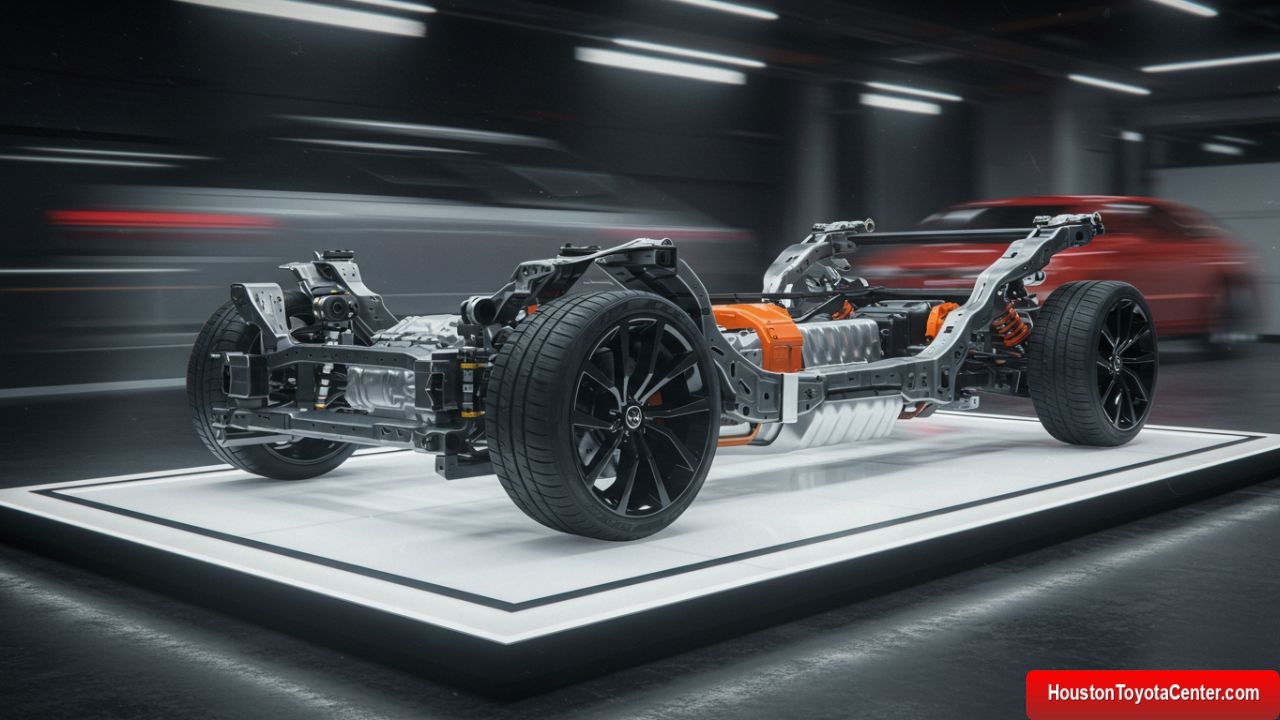In the automotive world, innovation doesn’t just live under the hood—it’s in the bones. Enter Toyota’s TNGA platform—the Toyota New Global Architecture—a revolutionary reengineering of the very foundation upon which modern Toyota vehicles are built. While the average driver may not think much about platforms, this shift in Toyota’s engineering philosophy has massive implications for handling, safety, performance, efficiency, and even aesthetics.
This article will take you deep into the core of what makes TNGA so important, how it affects your everyday drive, and why it represents one of Toyota’s most critical innovations in the last two decades.
What Is TNGA?
The Toyota New Global Architecture (TNGA) is not just a single vehicle platform—it’s a modular engineering and design philosophy that allows Toyota to build multiple different vehicles on a shared chassis structure. Much like Volkswagen’s MQB or Hyundai’s N platform, TNGA allows for economies of scale, design flexibility, and technological integration.
There are several variants of TNGA, including:
FREE: Quickly identify and understand problems with your vehicle 🚘
CLICK HERE| TNGA Variant | Purpose | Vehicles |
|---|---|---|
| GA-C | Compact cars | Corolla, Prius, C-HR |
| GA-K | Midsize vehicles | Camry, RAV4, Highlander, Lexus ES |
| GA-L | Rear-wheel drive luxury/performance | Lexus LS, Lexus LC |
| GA-B | Subcompacts | Yaris, Aqua |
| e-TNGA | Dedicated electric platform | bZ4X, future EVs |
Each variant is optimized for the size, weight, and purpose of the vehicle it supports.
The Three Pillars of TNGA: Stiffness, Lightness, and Agility
1. Increased Chassis Rigidity (Stiffness)
One of the most notable features of TNGA is vastly improved structural rigidity. The new platforms use high-tensile steel, laser screw welding, and optimized welding points to create a body that is 60% stiffer than previous generations in many models.
Why it matters:
- Better handling: A stiffer chassis allows for more precise suspension tuning.
- Improved ride quality: Less flex in the body means fewer squeaks, rattles, and vibrations.
- Enhanced safety: In the event of a collision, a rigid body maintains its shape to protect occupants better.
“With TNGA, we’ve engineered not just a better car, but a better driving experience.” — Toyota Chief Engineer Koji Sato
2. Lower Center of Gravity
Another critical TNGA improvement is lowering the vehicle’s center of gravity. By repositioning engines, fuel tanks, and seating positions, Toyota achieves better weight distribution and more stability.
This is especially evident in cars like the Toyota Camry and Corolla Hatchback, which handle far better than their predecessors despite being everyday family vehicles.
Real-world effects:
- Reduced body roll
- Increased cornering confidence
- More responsive steering
3. Reduced Weight, Better Efficiency
Weight is the enemy of performance and fuel economy. TNGA uses lightweight materials, including aluminum, ultra-high-strength steel, and polymer composites in non-structural components. These choices reduce curb weight without compromising safety.
Benefits:
- Improved fuel economy
- Enhanced acceleration
- Lower emissions
- Better braking
Enhanced Driving Dynamics: Not Just Marketing
Car reviewers and consumers alike have noticed the difference TNGA makes. For example, the Toyota RAV4, once known for being more utilitarian than engaging, now offers sharp handling, reduced body roll, and better road feel.
What Drivers Notice with TNGA:
- Tighter turning radius
- Improved feedback through the steering wheel
- Less bounce on uneven roads
- Confidence at highway speeds
Whether you’re driving a Prius or a Lexus LC 500, TNGA transforms the behind-the-wheel feel from “transportation appliance” to something more refined and responsive.
Safety by Design
TNGA is also a safety-first platform. The rigidity we mentioned earlier also plays a key role in crash performance. Combined with Toyota Safety Sense (TSS) systems, TNGA-based vehicles offer exceptional occupant protection.
TNGA Safety Advantages:
- Improved crash energy dispersion
- Stronger cabin integrity
- Easier integration of radar and camera sensors
- Reduced driver fatigue from a more stable ride
Scalability and Cost Efficiency
From a business perspective, TNGA allows Toyota to design once and deploy many times. This shared-platform strategy reduces:
- Manufacturing complexity
- Parts inventory
- Development time
- Costs per vehicle
Those savings translate into better-equipped vehicles at competitive price points for consumers.
Electric Future: e-TNGA
Toyota’s electrification strategy also rests on the TNGA foundation—specifically e-TNGA, a dedicated battery-electric vehicle (BEV) platform. This flexible architecture supports:
- Front-, rear-, or all-wheel drive layouts
- Variable battery sizes
- Multiple body styles
The Toyota bZ4X is the first production model to use e-TNGA, and more are on the way, including Lexus EVs and affordable compact BEVs.
Design Freedom and Aesthetics
One often overlooked benefit of TNGA is design innovation. Since core structural components are standardized and repositioned, Toyota’s design teams have more freedom to sculpt sleeker hoods, wider stances, and bolder lines.
Examples:
- Lexus LC 500’s muscular proportions
- Corolla Hatchback’s dynamic profile
- Toyota Venza’s coupe-like roofline
In other words, TNGA helps Toyota build cars that drive better and look better.
How TNGA Benefits You: A Recap
| Feature | Driver Benefit |
|---|---|
| Stiffer chassis | Better handling, safer crash protection |
| Lower center of gravity | Improved cornering and ride stability |
| Lightweight materials | Higher MPG, quicker acceleration |
| Modular design | More features at lower cost |
| Future-ready | Easier integration of hybrid, EV tech |
| Better packaging | Sleeker design and more cabin space |
Real-World Testimonies: TNGA in Action
Camry XSE Owner (2024)
“The Camry used to be a dad car. Now it feels like a sporty sedan. The suspension is tight, the steering is quick, and it doesn’t lean in turns like it used to.”
RAV4 Hybrid Driver (2023)
“I used to drive a CR-V, but the RAV4 handles so much better. It feels planted in corners, and it’s really quiet inside. Love the hybrid mpg too!”
Future Outlook: TNGA in the 2030s
Toyota’s strategy includes migrating all global models to TNGA-based platforms by the early 2030s. That includes internal combustion, hybrid, plug-in hybrid, and EV models. Expect to see more:
- EVs on e-TNGA
- Off-roaders using reinforced GA-F platforms
- Compact and midsize models with AI-based driver assist
As Toyota increases focus on carbon neutrality, TNGA will support new hydrogen and solid-state battery vehicles, making it one of the most future-proof platforms in the auto industry.
Final Thoughts: A Platform with Purpose
Toyota’s TNGA platform is not just about engineering—it’s a commitment to building better cars for everyone. From a practical Corolla to a thrilling Lexus LC, TNGA is the common thread that unites reliability with emotion, efficiency with excitement, and form with function.
If you’ve ever thought “It’s just a Toyota,” you haven’t driven a TNGA Toyota yet.


Leave a Reply